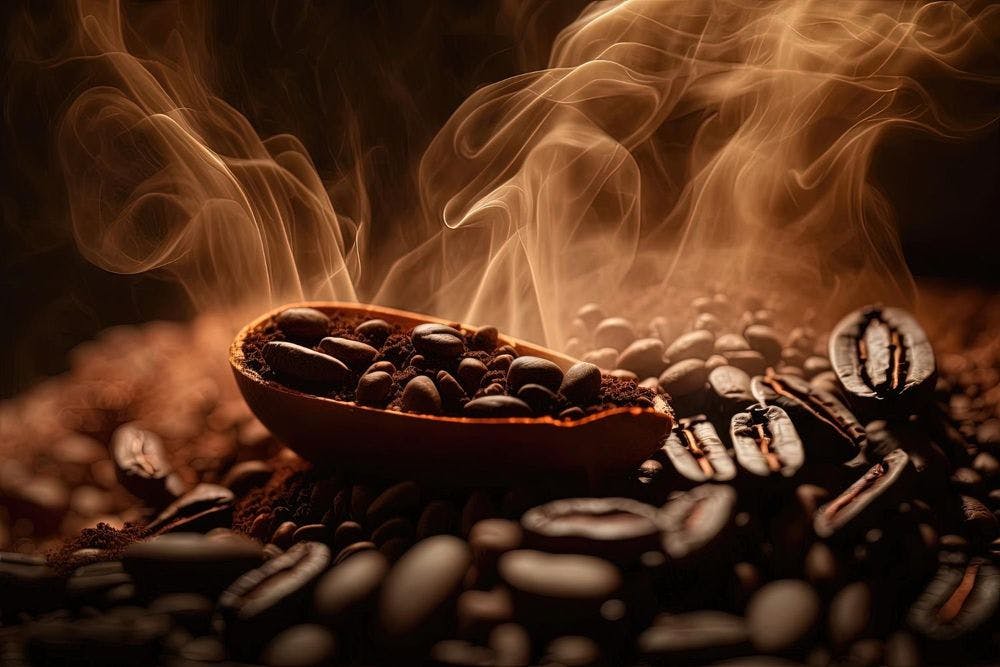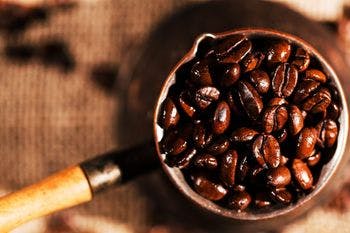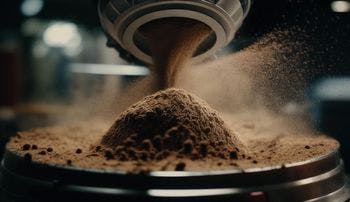
What is Bica Coffee (Portuguese Espresso)?

Coffee is a versatile drink consumed by coffee lovers worldwide. And various coffees serve different flavor buds. But have you heard of Bica? Yes! The name might sound funny, but the taste?
It's the bold, toasty, caramelly heart of Portugal's coffee love, a shot of twisted espresso with a surprising sweetness and a rich history.
Now what is Bica coffee, what sets it apart, how it originated and why such a weird name? You must be having these questions popping up again and again.
Don't worry! This guide is your answer to every question. Think anything Bica and you will find it here.
So let's dive in.
What is Bica coffee?
Also called um cafe, Bica coffee is a Portuguese specialty that surpasses ordinary coffee. Brewed with precision and passion, this brew has a distinctive character that delights coffee enthusiasts.
You can think of it as an espresso's bolder, cooler cousin. Made with a slightly lighter roast and extracted to a larger volume than its Italian alternatives, it is a flavorful punch without bitterness. It's served demitasse-style in a tiny glass, sufficient to savor the moment and the taste.
Most people mark the name “Bica” as “drink this with sugar.”
Why is it called Portuguese espresso?
Most coffee lovers get confused between espresso and Bica if kept together.
At a glance, you can make the mistake of picking the wrong drink. Because there is hardly any difference except the taste.
While similar to espresso in brewing method and strength, Bica has its distinct character. The lighter roast, larger volume extraction, and often-added sugar sets it apart from its Italian original.
History and origin of Bica coffee
Emerged from the enchanting streets of Lisbon, Portugal. This unique brew began its journey in the mid-20th century, evolving into a cultural icon that defines the Portuguese coffee experience.
The iconic Cafe A Brasileira in Lisbon's Chiado district holds the title of Bica's birthplace.
In 1905, owner Adriano Telles presented authentic Brazilian coffee to Lisbonites, offering complimentary Bica with every kilo of beans purchased. This smart marketing move ignited a love for this brew.
Derived from the Portuguese words for "spout" or "tap," the name "Bica" reflects the way coffee gracefully flows from the machine into cups on trays, symbolizing a seamless coffee experience.
Over the decades, Bica exceeded its Brazilian origins. Local roasters crafted a slightly lighter roast, infusing the brew with complex flavors and a surprising hint of sweetness.
A larger volume extraction compared to espresso resulted in a fuller body and a little bitterness, redefining the coffee.
Bica stands as the epitome of Portugal's cultural significance. Locals affectionately recommend enjoying it with sugar, using the phrase "Beba isso com açúcar."
Difference between Portuguese espresso and Italian espresso
1) Roast levels
Bica also known as Portuguese coffee uses slightly lighter roasts, highlighting the coffee's flavor notes, and offering a milder experience. Italian Espresso, on the other hand, often prefers a darker roast, adopting a bolder and more robust flavor profile. The intense roast brings forth the coffee's richness and depth.
2) Size variations
Bica is traditionally served in a demitasse-style tiny glass, inviting a sip-by-sip style. The larger volume extraction results in a more substantial cup, promoting a leisurely experience.
Whereas Italian espresso, true to its name, is served in a concentrated shot. The small, full serving catches the essence of a quick, strong caffeine kick that represents the Italian espresso culture.
3) Bitterness level
The lighter roast and larger volume extraction of Bica contribute to a milder bitterness.
Whereas Italian espresso, with its dark roast and concentrated nature, carries a more intense bitterness. The quick extraction process results in a powerful flavor profile.
4) Tradition vs. Versatility
Traditionalists often enjoy Bica with a touch of sugar, enhancing the overall experience. The choice to sweeten or not reflects the diverse preferences of Bica enthusiasts.
On the other hand, Italian Espresso, versatile in its consumption, caters to a range of taste preferences. It can be enjoyed as it is or customized with sugar, milk, or various creative additions.
How to make Bica coffee?
Step 1: Select and measure your coffee
Pick the freshly light roasted beans for a flavorful taste. Also, make sure that you check the roasting date before using the beans as beans start losing their flavor with time. Using a coffee scale, measure the desired amount of coffee beans for a single Bica. A typical ratio is around 18 grams of coffee for a single serving.
Step 2: Grind your coffee
Adjust your grinder and grind your beans to a fine consistency. The grind should be slightly coarser than the fine espresso grind to serve the lighter roast of Bica.
Step 3: Make your shot ready
Add the freshly ground coffee into the portafilter. Distribute the grounds evenly for uniform extraction.
Step 4: Tamp the coffee
Using a tamper, gently press down on the coffee grounds in the portafilter to create a compact, level surface. Tamping ensures an even extraction.
Step 5: Brew your shot
Begin the extraction process. The water should pass through the tamped coffee grounds at a steady rate, creating the signature Bica shot.
Step 6: Serve in a demitasse cup
Once the extraction is complete, pour the Bica shot into a demitasse cup or a small glass. The smaller serving size uplifts the overall experience.
Step 7: Add some sugar(optional)
Add sugar or any sweetener as per your choice.
Summing it up
That's all for this deep dive. I hope now you know why Bica coffee is called Portuguese espresso and what makes it different. Now grab your tools and start brewing.
Have you ever tried Bica coffee before? Share your views with me in the comments. Also, follow us on Instagram for more coffee adventures, or subscribe to our YouTube channel.

I am a coffee aficionado based in Seattle. I have devoted my passion and expertise to perfecting the art of home coffee brewing. I became known for my exquisite pour-over and espresso creations. I source coffee beans from local roasters and explores ...


